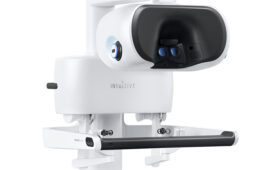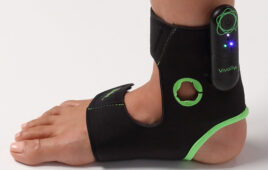 The U.S. Department of Health and Human Services (HHS) is doing everything from sharing more data to cultivating entrepreneurial talent and engaging in partnerships in order to support medical device innovators, the department’s CTO Ed Simcox told than 100 industry insiders in the Twin Cities today.
The U.S. Department of Health and Human Services (HHS) is doing everything from sharing more data to cultivating entrepreneurial talent and engaging in partnerships in order to support medical device innovators, the department’s CTO Ed Simcox told than 100 industry insiders in the Twin Cities today.
A major goal at HHS is to build an innovation-focused culture, what Simcox described as an internal means to an end. “And the end is to improve health outcomes and reduce costs,” said Simcox, who spoke a “Healthcare Startup Day Minnesota” event that the University of Minnesota and Medical Alley Association hosted for the department.
Simcox listed three major ways that HHS seeks to advance medtech innovation:
1. Data
HHS has a Data Insights Initiative that is testing out data integration and analysis of the department’s databases to support entrepreneurs and researchers — both inside and outside the department. The goal is to “curate that data and ultimately liberate that data as much as we can and get it in the hands of people who can make decisions based on that data,” Simcox said.
2. Talent
HHS’s Idea Lab is meant to support potential solutions to improve the delivery of health and human services. It includes the Ignite Accelerator, an internal innovation startup program for HHS staff; a venture fund for department employees with innovative ideas; an Open Innovation service that runs prize competitions, hackathons, crowdsourcing and more to solve challenges at HHS; and an Entrepreneurs-in-Residence program that presently has a group of 21 engaged in 15 projects.
Want to find ways to develop a closer relationship with HHS? “Allow one of your smart people to do a one- or two-year tour of duty at HHS,” Simcox said.
3. Partnerships
HHS, for example, has the Kidney Innovation Accelerator (KidneyX), a public-private partnership to accelerate innovation when it comes to better prevent, diagnose, and treat kidney diseases. There’s the Startup Days program that holds events such as the one today in Minneapolis. And HHS is part of a Global Digital Health Partnership involving 36 countries.

![A photo of the Medtronic GI Genius ColonPro polyp detection system flagging a potential sign of colon cancer during a colonoscopy. [Photo courtesy of Medtronic]](https://www.medicaldesignandoutsourcing.com/wp-content/uploads/2024/04/Medtronic-GI-Genius-doctors-268x170.jpg)


